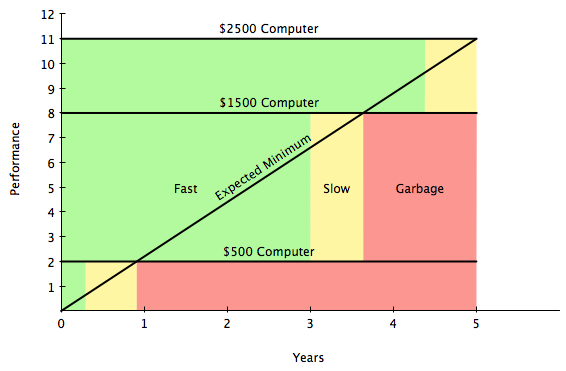There is a strong correlation between a new computer's initial cost and its performance characteristics. This performance is mostly or completely fixed over the life of a computer. Some components are upgradeable, but laptop processors are soldered to the motherboard. Some manufacturers (Apple) now sell laptops with fixed RAM and storage as well.
The minimum performance characteristics that software developers, engineers, and programmers (the world) expect computers to have increases over time. When you get a new computer, there is usually some margin between its performance characteristics and what the world expects. As time goes on, this margin closes and your computer seems slow. Eventually, the world's minimum expectation exceeds your computer's capabilities and your computer becomes garbage. The technique employed by computer manufacturers to drop the price of a laptop to the $500 point is to use components with less capable performance characteristics. These computers ship with a slim margin between their maximum capabilities and the world's minimums. They are slow to start and quickly become garbage.
Ballpark figures
$1500-$2500 computer will not be garbage for about 4 - 5 years
$1000 computer is good for about 3 years
$500 computer is practically garbage when you buy it
The $1000 computer seems to have the lowest cost per year of useful life
Digging Deeper
Computers also have replacement barriers. It takes time / money / attention / effort (let's use money for our units) to move all of your data from an old computer to a new computer. Let's call that about $300. Over 15 years, if you're buying $2,500 computers and getting 5 years out of them, you go through 3 computers and spend a total of $8,400 on hardware and overcoming replacement barriers. The total cost of the $1,500 computers that last 3 years is $9,000. The $500 laptops that you want to throw out a window every year (because they are garbage) cost $12,000 over 15 years.
So "splurge" on a new computer because it's really saving!

